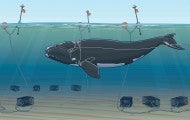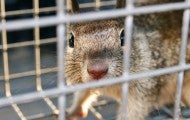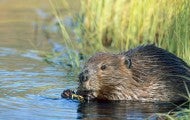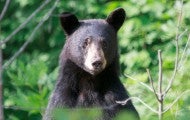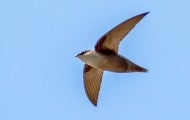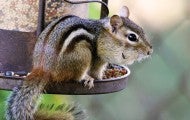CARSON CITY, Nevada─Today, the Humane Society of the United States released the disturbing results of two January 2023 undercover investigations of wildlife killing contests in Nevada, demonstrating the need for a state law to ban them. The HSUS investigator attended the contest weigh-ins at which...
Flying back and forth over Cape Cod Bay, a survey plane spotted a half dozen of the world’s rarest creatures: North Atlantic right whales. Such sightings are good news. The species hovers near extinction—by one estimate, fewer than 360 remain. Each time researchers locate a whale, they take pictures...
Today, the New York state legislature passed a bill that ends inhumane wildlife killing contests, in which participants compete to kill the most, the heaviest and the smallest animals for cash and prizes. In 2018 and 2020, the Humane Society of the United States released undercover investigations...
The Humane Society of the United States and the Humane Society Legislative Fund are noted champions for the protection and well-being of the nation’s wild horses and burros, and we have strong policy and practical commitments to the humane management of their herds on America’s Western ranges. We...
This list is provided as a resource for horse owners and is for informational purposes only. Please contact specific vendors for more information on their services. Every effort has been made to ensure the accuracy of all listings. This list is not exhaustive and is subject to change over time. The...
A raccoon in the chimney, a groundhog under the shed, a skunk under the back porch … when confronted with wildlife living up-close in their own homes or backyards, well-meaning but harried homeowners often resort to what they see as the most humane solution—live-trapping the animal and then setting...
On a longline fishing boat off the Galapagos Islands, a concerned biologist working undercover as a cook films a horrifying scene. As the camera rolls, a blue shark is dragged upside down out of the water, a sharp hook piercing it through the roof of the mouth and out through the side of the face...
Beavers are making a comeback. Nearly driven to extinction by the fur trade, nature’s best architects are now 6–12 million strong in the United States. This return will provide significant benefits to our country’s ecology, which has lost much of its wetlands to development and agriculture. Learn...
As black bear numbers increase in some North American communities and more people move into bear habitat, encounters between bears and people have risen. Whether you live in bear country or are just visiting, you can take simple steps to avoid conflicts. Learn More About Bears (Please note that this...
Rounding up and killing entire flocks of geese has become an all-too-common (and temporary) fix in many communities. Besides being inhumane, this also leaves room for a new flock to just move right in. Geese shouldn’t be killed for doing what comes naturally, especially when long-term, effective and...

